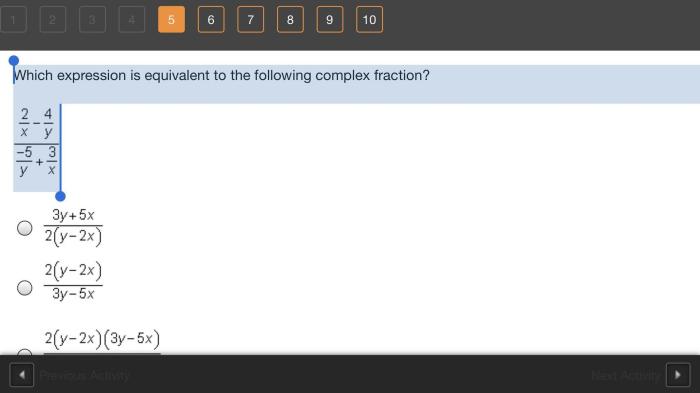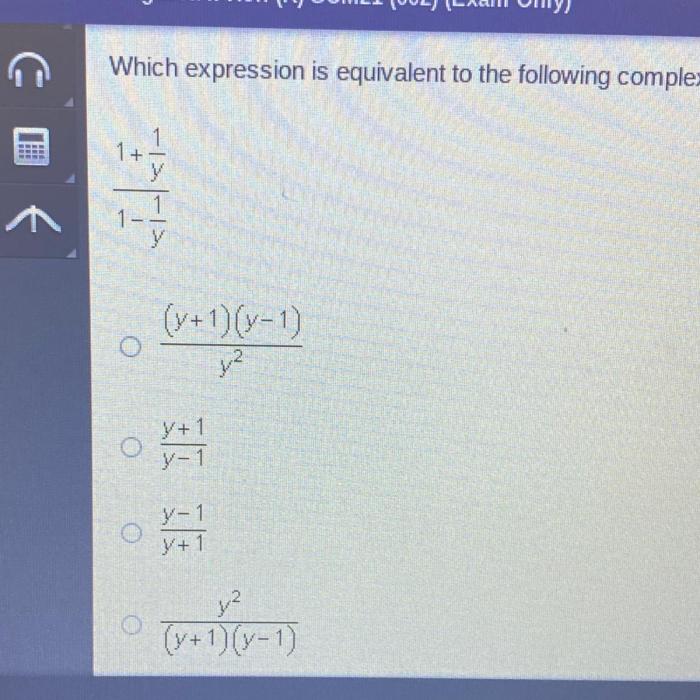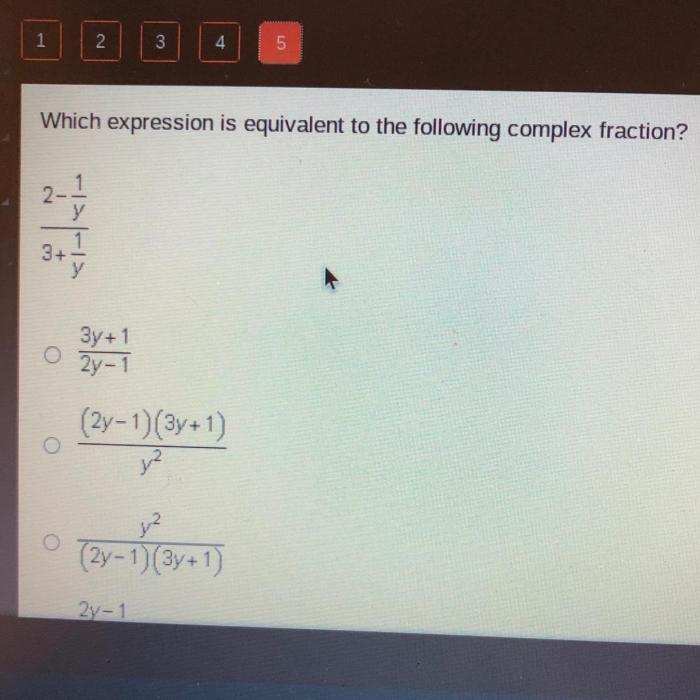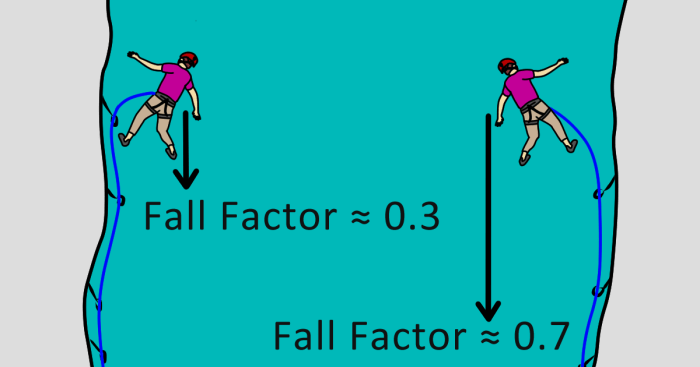As we delve into the topic of which expression is equivalent to the following complex fraction, we embark on an intellectual journey that unveils the intricacies of mathematical equivalence. Complex fractions, with their layered structure, present a unique challenge that requires a systematic approach to simplification.
This exploration will illuminate the methods for determining equivalence and showcase the practical applications of complex fractions in the real world.
To fully grasp the concept of equivalent expressions, we must first understand the underlying principles that govern their equality. Equivalent expressions are those that have the same value despite their different appearances. For instance, the expressions 2 + 3 and 5 are equivalent because they both represent the same numerical value.
Equivalent Expressions: Which Expression Is Equivalent To The Following Complex Fraction
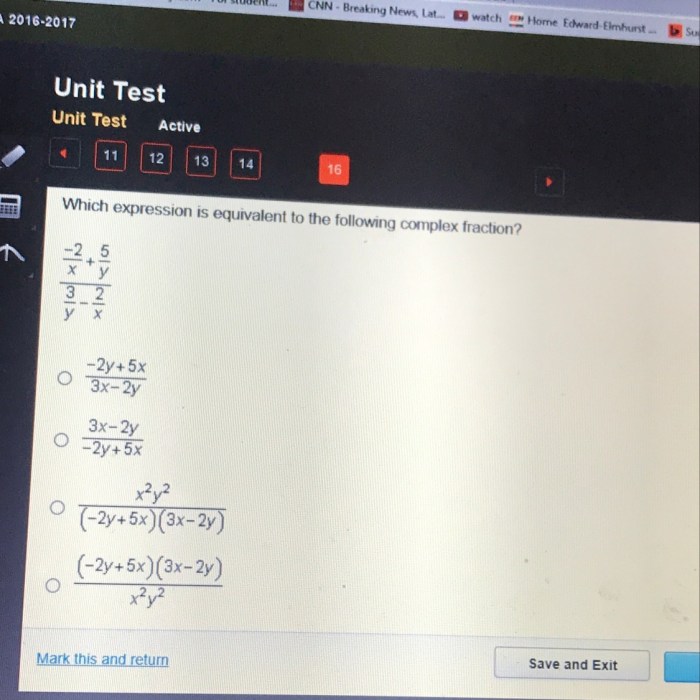
Equivalent expressions are expressions that have the same value for all values of the variables involved. For example, the expressions x + 2 and 2 + x are equivalent because they both equal the same value for any value of x.
Another example of equivalent expressions is 3x and x + x + x. Both of these expressions equal the same value for any value of x.
Simplifying Complex Fractions, Which expression is equivalent to the following complex fraction
A complex fraction is a fraction that has a fraction in its numerator or denominator, or both. For example, the following are all complex fractions:
- $\frac1/21/3$
- $\frac1 + 1/21 – 1/2$
- $\frac11/2 + 1/3$
To simplify a complex fraction, we can use the following steps:
- Multiply the numerator and denominator of the complex fraction by the least common multiple (LCM) of the denominators of the fractions in the numerator and denominator.
- Simplify the resulting fraction.
Equivalence of Complex Fractions
Two complex fractions are equivalent if they have the same value for all values of the variables involved. To determine whether two complex fractions are equivalent, we can simplify both fractions and then compare the results.
For example, the complex fractions $\frac1/21/3$ and $\frac32$ are equivalent because they both simplify to the same value, which is 1.5.
Applications of Complex Fractions
Complex fractions are used in a variety of applications, including:
- Physics
- Chemistry
- Engineering
- Economics
For example, complex fractions are used in physics to calculate the velocity of an object and in chemistry to calculate the concentration of a solution.
General Inquiries
What is a complex fraction?
A complex fraction is a fraction that has another fraction in its numerator or denominator.
How do you simplify a complex fraction?
To simplify a complex fraction, you can multiply the numerator and denominator by the least common multiple of the denominators of the fractions in the numerator and denominator.
How do you determine if two complex fractions are equivalent?
To determine if two complex fractions are equivalent, you can simplify both fractions and then compare the numerators and denominators.
